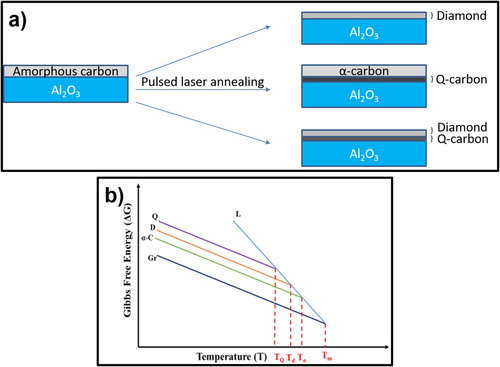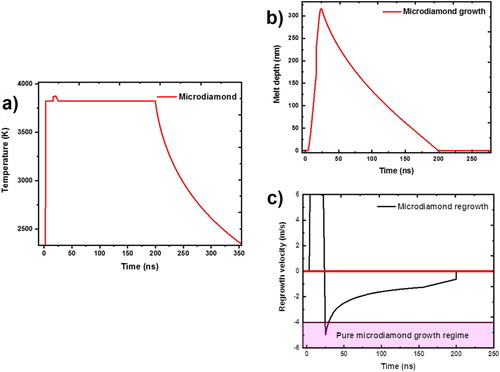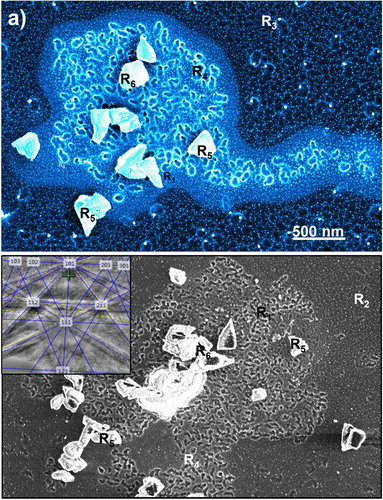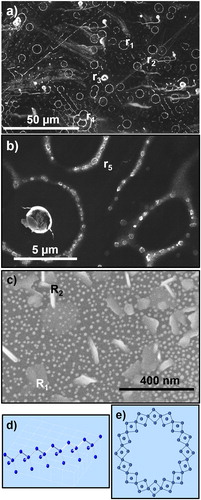Figures & data

Figure 1. (a) Conversion of amorphous carbon (a-carbon) into α-carbon, diamond, and Q-carbon near the sapphire substrate; and (b) Gibbs free energy (ΔGT) versus temperature T, showing temperatures for the formation of different phases.

Figure 2. Laser-solid interaction calculations using the SLIM program: (a) temperature versus time; (b) melt depth versus time; and (c) Melt growth velocity as a function of time.

Figure 3. Formation of circular nanodiamond rings at the sapphire interface (R1), and noncircular nanodiamond rings within the bulk of α-carbon (R2); and (b) nanodiamond noncircular rings at the interface and bulk of α-carbon without Q-carbon.

Figure 4. (a) Direct comparison of nanodiamond rings and epitaxial microdiamonds in α-carbon and Q-carbon, and (b) different morphology nanodiamond rings and epitaxial microdiamonds in α-carbon and Q-carbon. The inset shows <111> diamond EBSD pattern from R5.

Figure 5. (a) Formation of large circular microrings with the sapphire substrate; (b) formation of nanoring structure within the microrings;(c) formation of self-organized epitaxial nanodiamonds at the α-carbon/sapphire interface; (d) schematic representation of alignment of diamond tetrahedra along the <110> directions for the formation stringlike structures; and (e) self-organization of <110> strings into circular rings to minimize line tension energy.

